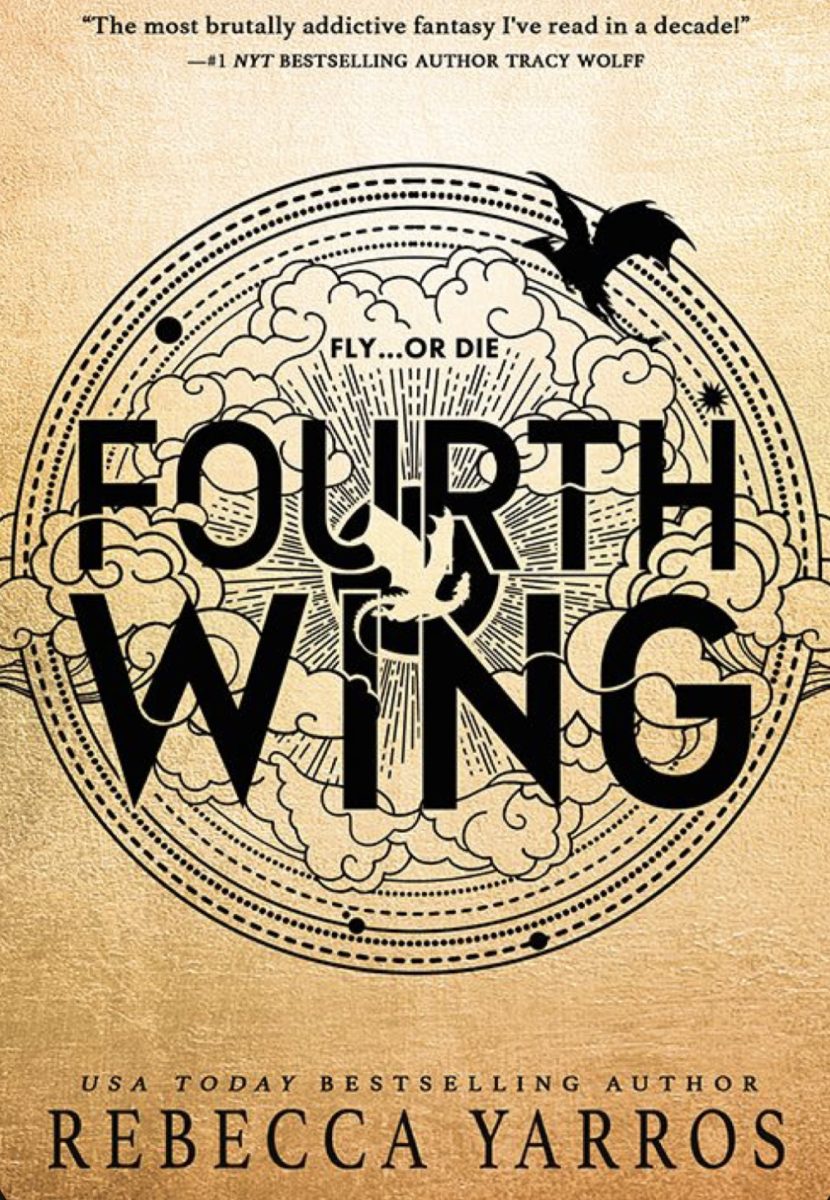Reading slump is real.
Arguably, it is one of the most hopeless feelings in the creative world, contending only with the devastating spell of writer’s block. Writer’s block is controllable, something that can be manipulated through trial and time; a reading slump, however, is solely dependable on reversing reading burnout and finding a novel that satisfies the reader’s demands.
Fourth Wing by Rebecca Yarros was the novel for me that not only shattered my post-summer reading assignment slump but also dumped me back in that rut the moment I finished. The plot is laced with intense fantastical creatures, and the outlandish elements of the illusory are world bolstered by real-world elements such as betrayal, romance, and freedom. b
The 498-page novel was published on May 2, 2023. Being the first and only book published so far in the soon-to-be five-book series, readers like myself have finished the novel in agony, knowing it will be a suspenseful wait until November 2023, when the second installment of the Empyrean series comes out.
When my friend first described Fourth Wing to me, I was immensely skeptical. She threw around words such as “talking dragons” and “dragon riders”—words that my mind associates with third-grade picture books or weird action movies. However, Yarros incorporated the use of dragons in a mature, developed manner, upholding the fantasy element that people crave while making the most unbelievable things believable.
Fourth Wing highlights the first-person perspective of 20-year-old Violet Sorrengail. Violet is a well-crafted character with dynamic character traits that are impacted by the harrowing journey she goes through at Basgiath War College. She learns quickly that there is no faking it until you make it at the war college: you fail, you die. This sentiment is echoed throughout the book, pulling readers to rally with Violet in a simple yet captivating story.
While I thoroughly loved the story from Violet’s female perspective, I couldn’t help but feel as if her character had been written before. Violet’s punchy personality, her bold, audacious demeanor, the triumphs, and setbacks—these elements are what made the book intriguing and a proclaimed pager-turner, yet it wasn’t wholly unique.
The plot twists were thrilling, but I was able to predict most of them. I rooted for my favorite characters only to chip away at their exterior facade and realize they are just another common archetype: the lover, the ruler, the comic relief—all of them add crucial details and depth to the plot, yet their origins are traced back to words that have been inked in print for decades.
Violet’s heroine figure—although parallel to other imaginative women such as Aelin Galathynius and Feyre Archeron—is compelling and inspiring nonetheless, especially due to her moral values, desire to make her family proud, and simple drive to survive. Popular characters are typically popular for the same reasons: they possess intense wit, their lesser problems are usually centered around a really strong man, and their familial relationships are precarious.
Even though Fourth Wing is far from an illustrious classic with cryptic meanings and themes, I have recommended this novel to everyone who has asked for a solid, quick-paced read to rupture their impending reading slump.


























































































